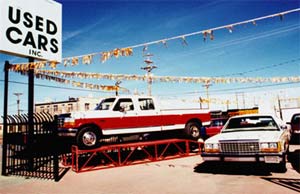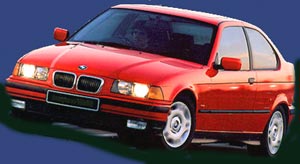Automobile Shopping Guide


Automobile shopping is no easy job, what with the range of vehicles available before you. Fancy brands, dealer discounts, attractive features, easy financing schemes tend to leave a consumer confused and bewildered. Allow us to throw some light on the automobile shopping process. Check our guide for tips on selecting an automobile that fits into your budget, lifestyle and addresses your requirements.
Automobile Shopping
With the crowded and competitive automobile market today, it is easy to be swayed by incentive schemes and fancy advertising. Attractive discounts and trade-in offers are luring consumers into making automobile purchases. But it is essential to keep track of the market conditions and do your homework before you embark on an automobile-shopping spree. Dig around for information and check out all the available options. With enough legwork and a bit of luck to tip the scales, you might just be able to pick a great car at an affordable rate. Spending a week or two on research and the same on car hunting can pay dividends in the long run.
Pre Owned Certified Cars:
One viable alternative is to consider pre-owned certified cars from auto makers. Such vehicles come with the support of the manufacturer after rigorous inspection and reconditioning and refurbishment. Check out affordable financing options that come with such schemes.
Trade- In Offers:
Trading in your used vehicle for a new one is an oft -followed policy by most buyers opting to upgrade their set of wheels. Try and get the maximum value on your trade-in by comparing several dealership offers and bids. A little extra effort can go a long way in getting a better deal on your older car. Use Vehicle Appraiser guides and auto value guides that provide trade-in values based on the mileage, condition and other options.
Automobile Shopping Guide
What are the factors that you should consider when setting out for auto shopping?
- Chalk out your requirements when choosing a vehicle. What are the practical uses and who is most likely to drive it? What are your space requirements? What kind of engine capacity is suitable for you? Is a front- wheel preferable over an all-vehicle drive? What are the safety factors? Is it reliable and cost-effective to maintain?
- Zero in on the make and model you would like to buy but keep your range a bit wide so that you can pick up a good bargain. A bit of flexibility will give you better bargaining leverage.
- Your auto-shopping budget is a critical factor while making a purchase decision. An automobile is perhaps one of the largest investments of your life so it is essential to shop around for a good bargain as well as an attractive financing option.
- Visit web sites of auto makers and check out the details on different model versions and their features. Peruse vehicle recall records for safety lapses and TSB (Technical Service Bulletins) for fixing unforeseen manufacturing problems. Automobile magazines and auto guides serve as excellent references.
- You can solicit enquiries from reputed auto dealers in locating a perfect vehicle - one that is just right for you. You can take quotes from multiple dealers so that you can strike the best available deal. Online auto shopping is also another option.
Shopping Tips for Used automobiles
1. Take a deep breath and start at the beginning. Take a long and hard look at the exterior and interior. Give a push on the hood and see if the car bounces once and settles down to its previous level. Any deviation might indicate a worn suspension. Look under the hood carefully. A dusty engine might indicate a poor maintenance.
2. Check the engine oil dip stick. Wipe clean the dip stick and insert it in. Remove it and examine the oil. If it is black and feels thin, the oil has not been changed as per the manufacturer's schedule. Again another sign that the owner has not been taking due care.
3. A fresh coat of paint anywhere inside the bulkhead of the engine compartment might mean a touch up job after an accident. Move on.
Once you are inside, check the seats and the seat belts. If the car has a driver side airbag, look for any fault indication on the airbag control module from the console. Adjust the seat for your height and turn on the ignition. Look for any abnormal sound when the engine fires.
4. Then let the engine tick over for a few minutes. Use an assistant to rev up the engine and look out for the tell-tale blue smoke from the exhaust. If the engine is cold, it might spew a bit of white smoke initially and on sustained revving, it should stop smoking. Dealing with a smoking spouse is painful enough. You wouldn't want to be saddled with a smoking car.
5. If the car sounds and feels normal, it is about time for a test ride. Drive carefully while keeping an ear out for any sound that doesn't sound normal. Increase the speed and if there is no one following you, try and decelerate the car quickly. The car must not try a slalom. It should come to a stop in a straight line with no tendency to nose dive. The brake pedal must feel firm and assuring. Your life may depend on it. So take time to evaluate all the aspects of the car before you fork out the money.
6. It might help to get a reliable technician from a reputed garage to check out a potential car. A shiny polished car may indicate good maintenance but may hide a poor engine.
7. If you have your heart set on the diesel powered SUV and it lets out a steel-grey smoke at the touch of the pedal, fear not. Most diesel engines last longer than their gasoline engines. And they tend to emit a smoke puff when they are cold or if their fuel is not up to their expectation. And the diesel engines produce a bit of clatter when cold too. You would make a loud protest too if someone wakes you up from bed to run at 100 miles an hour. Not my idea of starting the day ! But poor automobile engines have to face this every day.
8. Tires, body condition, air conditioning and upholstery will also need to be checked. Test-driving the car is essential to check for any strange noises and to assess the comfort levels. Keep your ears peeled for strange rattles and squeaks. A deep growl similar to the one emitted by your bitter half when he is disturbed from his favorite show, at a set speed might indicate an expensive engine overhaul. It may be the sign of a worn big end bearing.
9. Ensure that the shift lever, brake pedal, accelerator and clutch feel comfortable and easy to operate. Another valuable tip while automobile shopping is to look for any fresh leaks or drips. The exhaust pipe should not be spitting oil or excessive water.
10. Compare mileage and date on title and check for discrepancies in odometer readings. Shop around for a payment option that suits your finances best. Check the registration papers as well as recent emissions requirements. Examining the title to ensure it isn't a salvaged or lemon vehicle is an essential auto shopping tip.
Top of the Page: Automobile Shopping Guide
Tags:#automobile shopping #automobile shopping guide #auto shopping tips
 Automobile Extended Warranty
Automobile Extended Warranty Automobile Lemon Law
Donate Automobile
Automobile Safety Rating
Automobile Recall
Automobile Insurance
Automobile Resale Value
Used Car Loan Calculator
American Automobile Association
Automobile Blue Book
Automobile Shopping Guide
Mobile Car Wash
Hybrid Vehicle
Top of the Page: Automobile Shopping Guide
Popularity Index: 100,480

